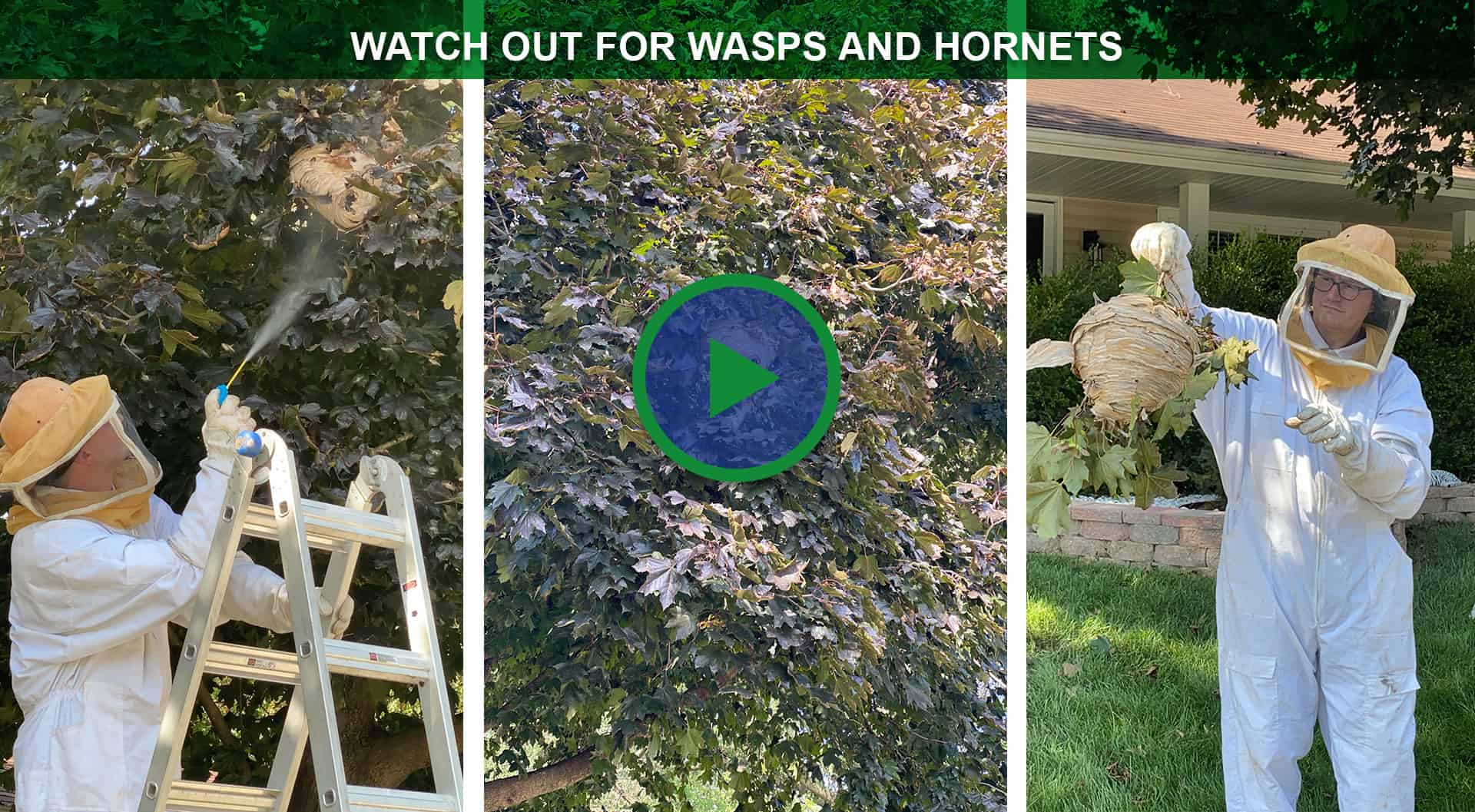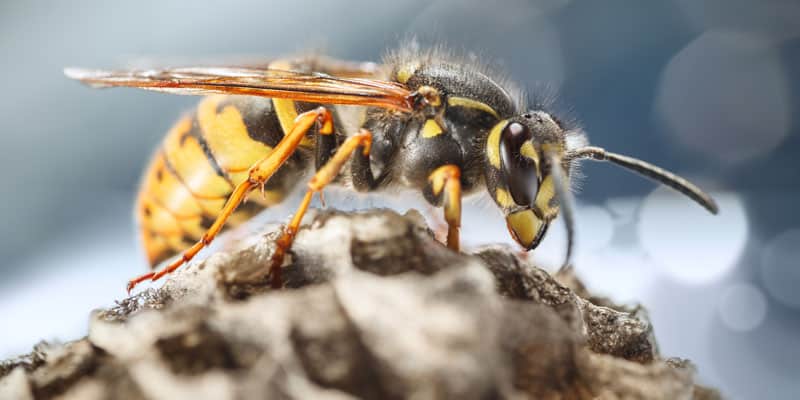Rock and Roll Hall of Famer and Genesis front man Phil Collins released an album in the 1980s titled No Jacket Required that produced several legendary hits.
That title is exactly how Missouri, Illinois and Kansas homeowners and outdoor enthusiasts feel about the presence of yellowjackets and other stinging insects this time of year – they are not required nor are they welcome!
While stinging insects are certainly a nuisance when you are trying to enjoy a meal on your patio or work in the yard, the threat of allergic reactions to being stung is very real.
An incident this summer in Arizona resulted in the tragic death of one person and injuries to several others. In fact, more than 500,000 people go to the emergency room in the United States each year due to reactions from stings.
Stinging insects, especially yellowjackets and bald-faced hornets are aggressive and become more so in late summer and early fall as their colonies grow in numbers and the need to feed the swelling ranks increases.

WATCH ROTTLER’S JASON EVERITT DISCUSS STINGING INSECTS
On the aggression scale, yellowjackets and bald-faced hornets top the list with solitary wasps and other bees being less aggressive and more focused on their roles as pollinators.
Yellowjacket Facts
Yellowjackets typically have a yellow and black head/face and patterned abdomen. They are wasp-like in shape and workers 3/8 to 5/8 of an inch long. Yellowjackets are social insects that live in nests or colonies with up to 4,000 workers. They are most active in the late summer and early autumn when a colony is at its peak.
There are many different species of yellowjackets, and they are usually found wherever humans are. They build paper carton nests out of chewed up cellulose and are usually found in the ground or in cavernous areas such as eaves and attics.
Bald-Faced Hornet Facts
The aggressive bald-faced hornets are related to the yellowjacket but have a very distinctive appearance with cream-colored and black markings. Queen bald-faced hornets are larger in size than their adult-worker counterparts. Their aerial nests are about the size of a basketball and are enclosed unlike the open cone structure of other stinging hornets and insects, like yellowjackets and paper wasps.
A bald-faced hornet infestation is clearly visible with the presence of a nest, which is suspended above the ground. There will also be worker bald-faced hornets flying around the nest and nearby area if there is an infestation.
Learn more about ways to avoid problems with stinging insects.
Contact Rottler Pest Solutions
Protect your family from bed bugs, call 1-877-ROTTLER, email or chat online with Rottler pest specialist today about a how to protect you and your family from yellowjackets and other stinging insects.


